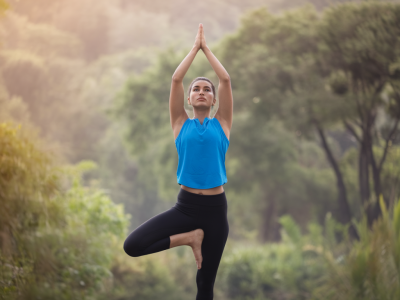
As someone who spends a significant amount of time immersed in the world of sports and fitness, I’ve come to realize just how critical mobility exercises are—not only for improving performance but also for preventing those dreaded sports injuries. Whether you’re a seasoned athlete or someone who simply enjoys staying active, incorporating mobility exercises into your fitness routine can make all the difference in keeping you at your best while minimizing risks.
What Are Mobility Exercises?
Let’s start with the basics. Mobility exercises are movements designed to improve the range of motion in your joints and the flexibility of your muscles. Unlike static stretching, which focuses on holding a stretch for an extended period, mobility work is often dynamic—meaning it involves active movement. Think of it as finding balance between flexibility and strength, allowing your body to move freely and efficiently.
Mobility exercises go beyond just "warming up" your muscles. They're a proactive approach to keeping your joints healthy, your muscles pliable, and your body better prepared to handle the physical demands of your favorite sport or workout. And the best part? Adding just 10-15 minutes of mobility work a day can pave the way for stronger performance and fewer injuries.
How Mobility Exercises Help Prevent Injuries
One of the key benefits of mobility exercises is their ability to create structural balance in the body. When certain muscles are tight or joints are restricted, it forces other parts of your body to compensate. This constant compensation can lead to overuse injuries, muscle strains, and even long-term joint issues.
By working on mobility, you’re addressing these imbalances before they become a problem. For example:
- Shoulder mobility: Proper mobility in the shoulders can decrease the risk of rotator cuff injuries, which are common in sports like tennis, baseball, or swimming.
- Hip mobility: Improving hip flexibility and range of motion can prevent issues like lower back pain, a problem frequently faced by runners and cyclists.
- Ankle mobility: Adequate ankle flexibility can enhance balance and stability, reducing the risk of ankle sprains and knee injuries during high-impact sports.
In addition to injury prevention, improved mobility can enhance your overall athletic performance. A wider, smoother range of motion allows for more efficient movement patterns, translating to greater power, speed, and agility on the field, court, or track.
My Favorite Go-To Mobility Exercises
When it comes to mobility work, consistency is key. Here are some of my favorite mobility exercises that I personally practice and recommend to anyone looking to stay injury-free:
- World’s Greatest Stretch: This is an all-in-one exercise that targets the hips, hamstrings, shoulders, and spine. It’s fantastic for warming up before a workout or sport.
- Couch Stretch: A lifesaver after a long day of sitting or an intense lower-body workout. This stretch focuses on hip flexors and quads, which are often tight and under-mobilized.
- Thoracic Spine Rotations: If you ever feel stiff in your mid-back, this exercise is for you. It encourages spinal mobility and improves posture for better breathing and movement mechanics.
- 90/90 Hip Stretch: Perfect for targeting hip rotators, the 90/90 stretch helps improve both internal and external hip mobility—crucial for everything from squatting to changing direction during sports.
- Ankle Dorsiflexion Stretch: Tight ankles are often overlooked yet are a major factor in limiting mobility during activities like running or jumping. This stretch helps improve ankle range of motion and stability.
If you’re new to mobility work, don’t be intimidated. Start small, and over time, you’ll notice the positive effects on how you move and feel.
Mobility Tools to Elevate Your Routine
Over the years, I’ve experimented with different tools to help enhance my mobility practice. While these tools aren’t necessary, they can be game-changers if you’re looking to take your routine to the next level:
- Foam Roller: Foam rolling is an excellent way to release tight muscles and improve tissue elasticity before diving into mobility work. I personally love the TriggerPoint GRID foam roller for its unique texture.
- Resistance Bands: Bands are incredibly versatile and can help add dynamic tension to your stretches. I particularly recommend the set from Theraband for their durability.
- Lacrosse Ball: For targeted muscle release (like those stubborn knots in your hips or shoulders), a simple lacrosse ball can be extremely effective. It’s small, portable, and affordable.
- Yoga Blocks: These are great for improving alignment and adding support during more complex movements. Blocks from Manduka are sturdy and perfect for mobility enthusiasts of all levels.
Remember, these tools are designed to complement your mobility exercises—not replace them. Consistent movement and intentional practice will always be the foundation of good mobility.
When to Incorporate Mobility Work
If you’re wondering when to fit mobility exercises into your busy schedule, the short answer is: anytime! However, my personal recommendation is to include them as part of your warm-up routine before a workout or as a cool-down afterward. Additionally, you can dedicate an entire session to mobility on your rest days. It’s a fantastic way to stay active while giving your body the recovery it needs.
For instance, before a high-intensity interval training (HIIT) session, I always start with dynamic mobility drills to activate my muscles and prepare my joints for movement. Afterward, I might spend 10 minutes doing static holds and some foam rolling to release tension.

